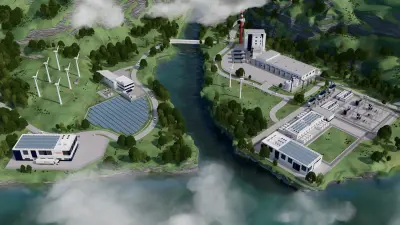How does PEM electrolysis work?
In this electrolysis process, ultrapure water (H₂O) flows around a proton exchange membrane (PEM). Located between the anode and the cathode, this membrane is ionically conductive. When an electric voltage is applied to both electrodes, the water on the anode side oxidizes to oxygen (O₂), free electrons, and hydrogen ions. The ions pass through the membrane by diffusion. They then combine with the electrons at the cathode to form hydrogen atoms (H₂). The reaction products of PEM electrolysis are therefore hydrogen and oxygen (H₂ and O₂).
PEM water electrolysis uses a solid polymer electrolyte – the polymer electrolyte membrane, which is also called the proton exchange membrane – as an ionically conducting medium between the anode and the cathode. This is what sets it apart from other water electrolysis processes such as alkaline electrolysis (AEL) or high-temperature electrolysis (HTE) with solid oxide electrolyzer cells (SOECs).
Functional principle of PEM electrolysis

Loading the video requires your consent. If you agree by clicking on the Play icon, the video will load and data will be transmitted to Google as well as information will be accessed and stored by Google on your device. Google may be able to link these data or information with existing data.
Advantages of PEM electrolysis
Compared to other electrolysis methods, PEM electrolysis boasts a number of key benefits, including higher power density and energy efficiency, as well as high hydrogen output pressure.
There are other system benefits of using PEM electrolyzers, too – they offer maximum flexibility, require very little space, and can be scaled with ease. Moreover, PEM electrolyzers are very safe and reliable, making them the ideal complementary technology to renewable energy sources such as wind and solar power for producing green hydrogen.
The comissioning of Bosch Hybrion PEM electrolysis stacks for customers starts in 2025. All technical specifications given are development objectives and refer to the beginning of life.




